Abstract
The degree of aggregation of bovine serum albumin has been shown to influence not only the quantity of antibody produced but also the magnitude and increase of the relative binding affinity of the antibodies. Corynebacterium parvum which causes massive lymphoreticular cell proliferation initiates `non-specific' factors in the immune system enabling aggregate free bovine serum albumin, which normally induces unresponsiveness or hyporesponsiveness, to induce a hyperresponsive state in rabbits. This organism not only augments antibody production but the magnitude and evolution of the relative binding affinity of the antibodies.
Full text
PDF
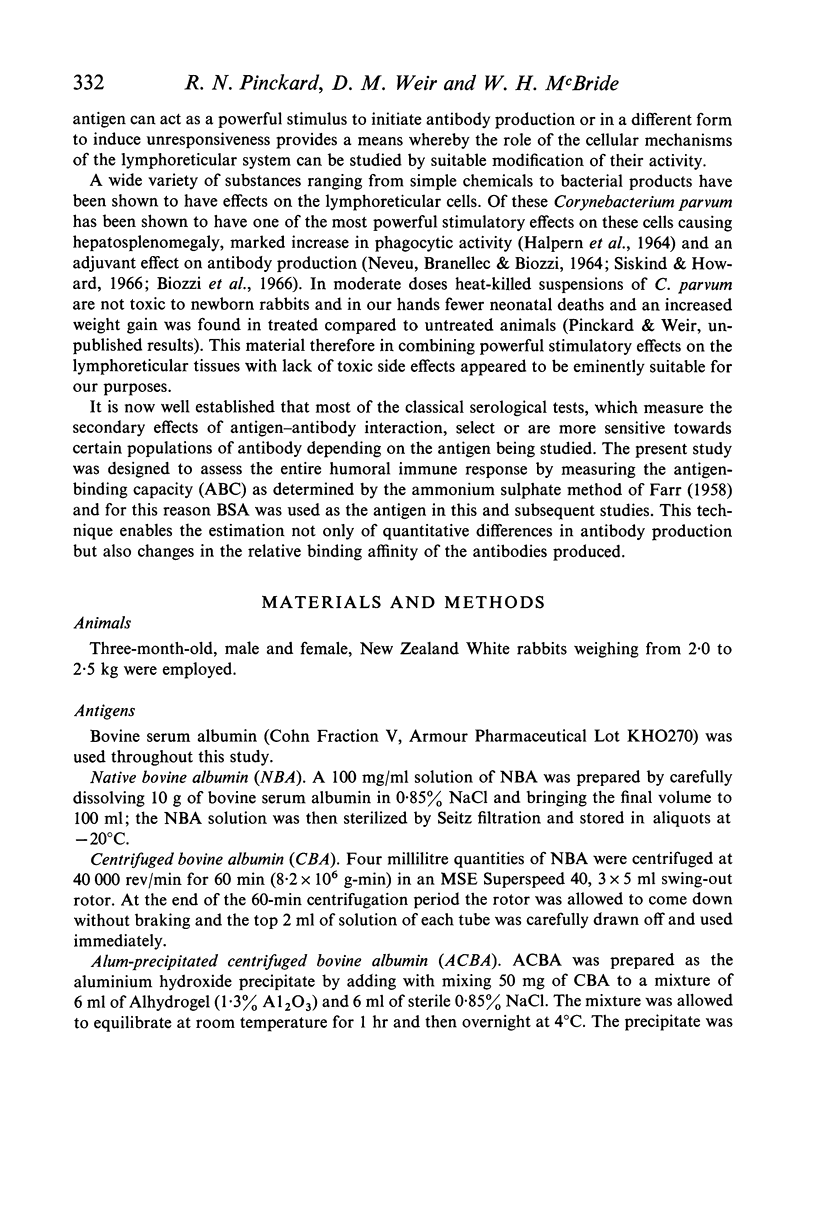
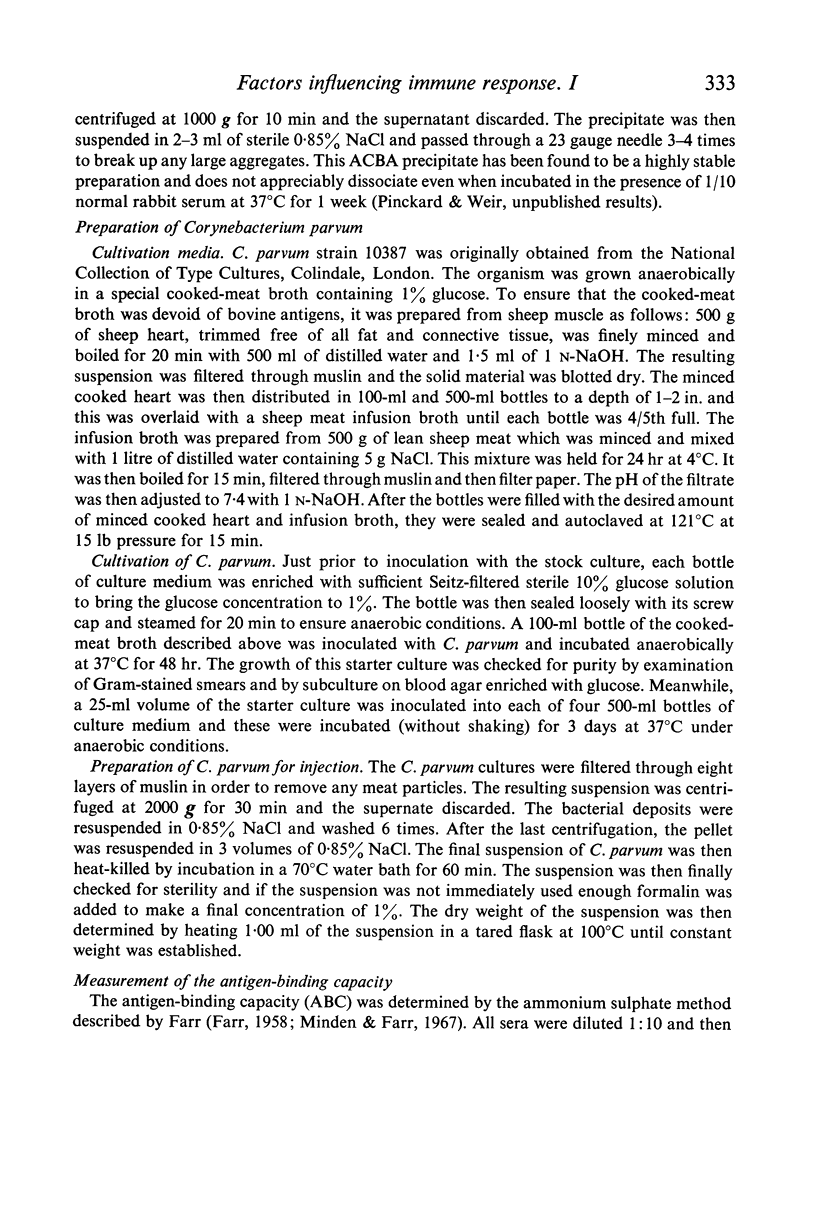
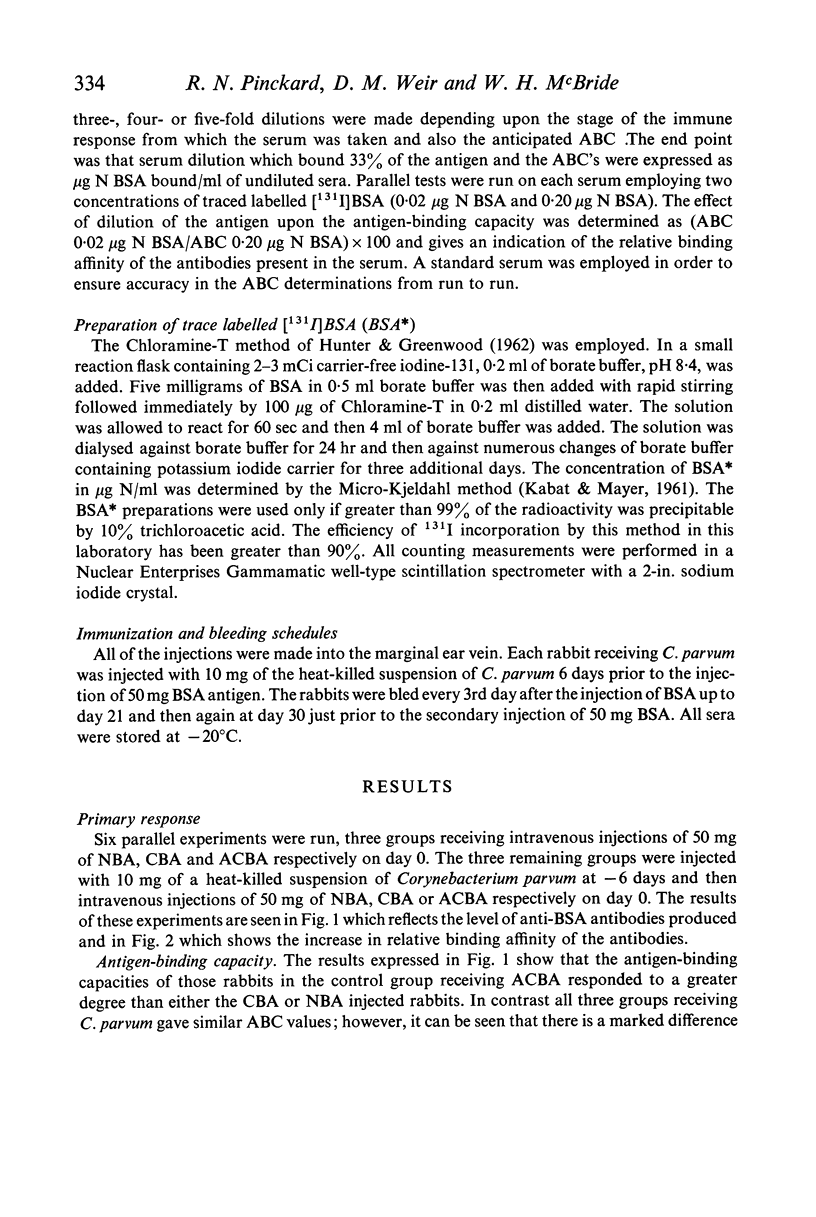
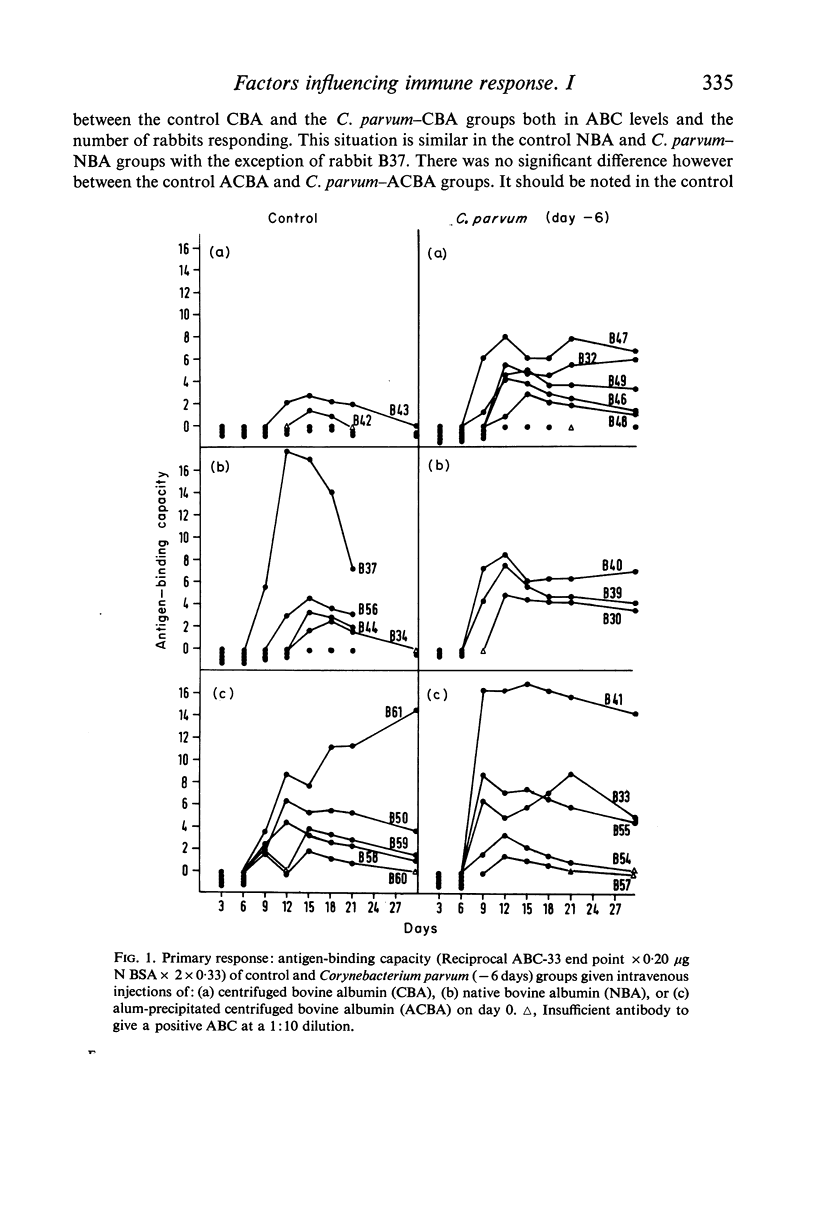
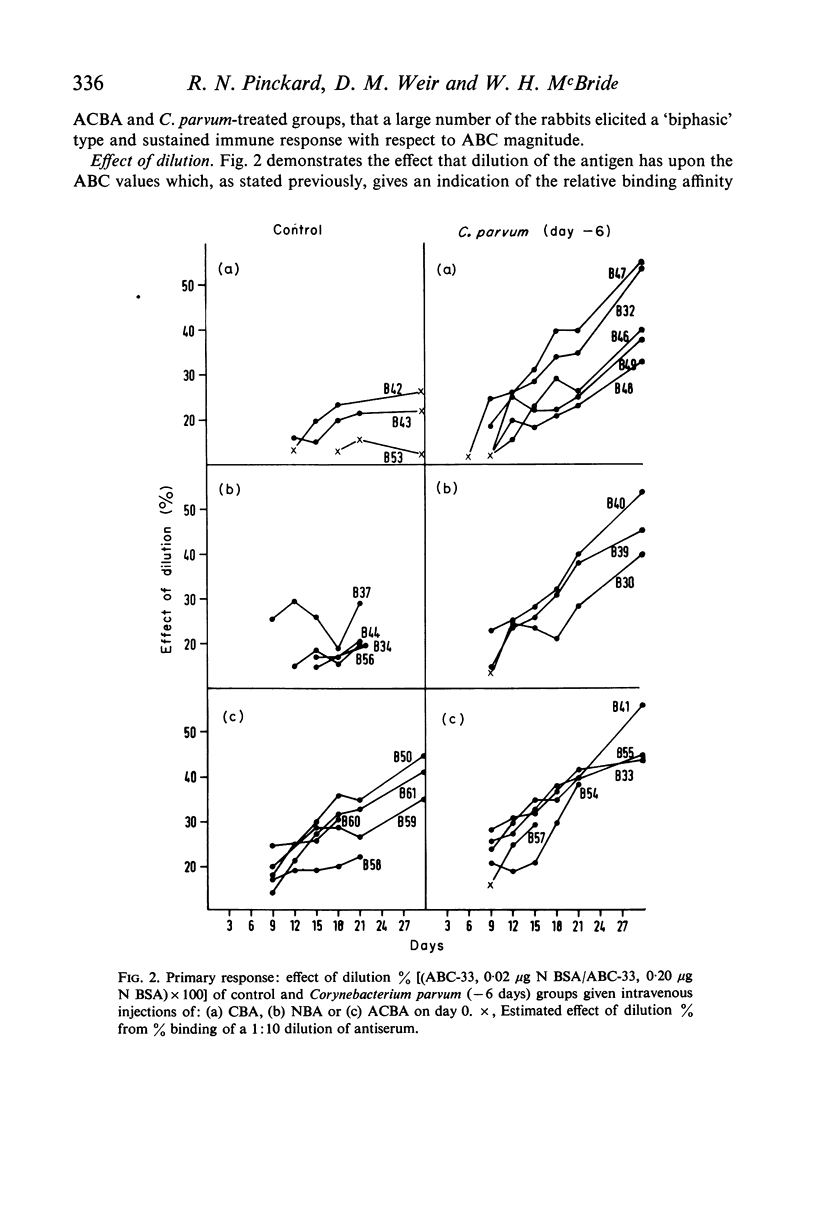
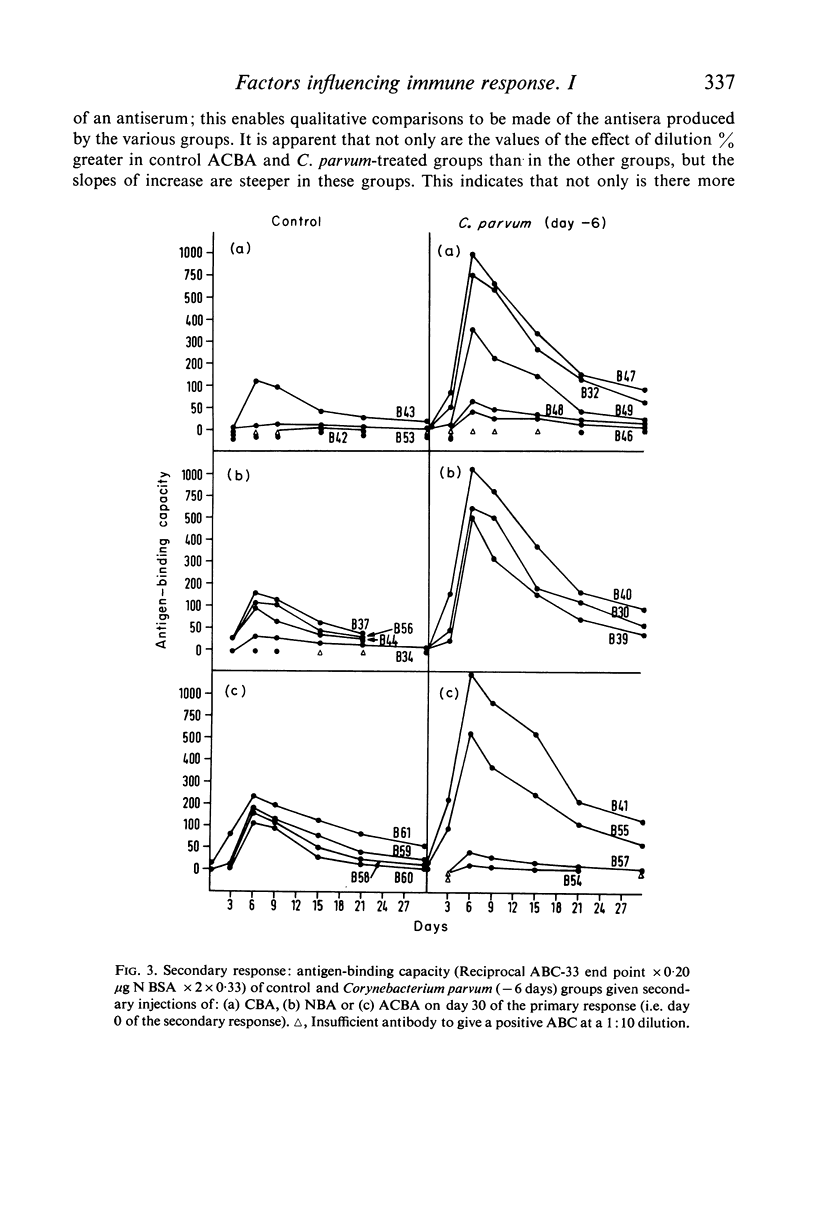
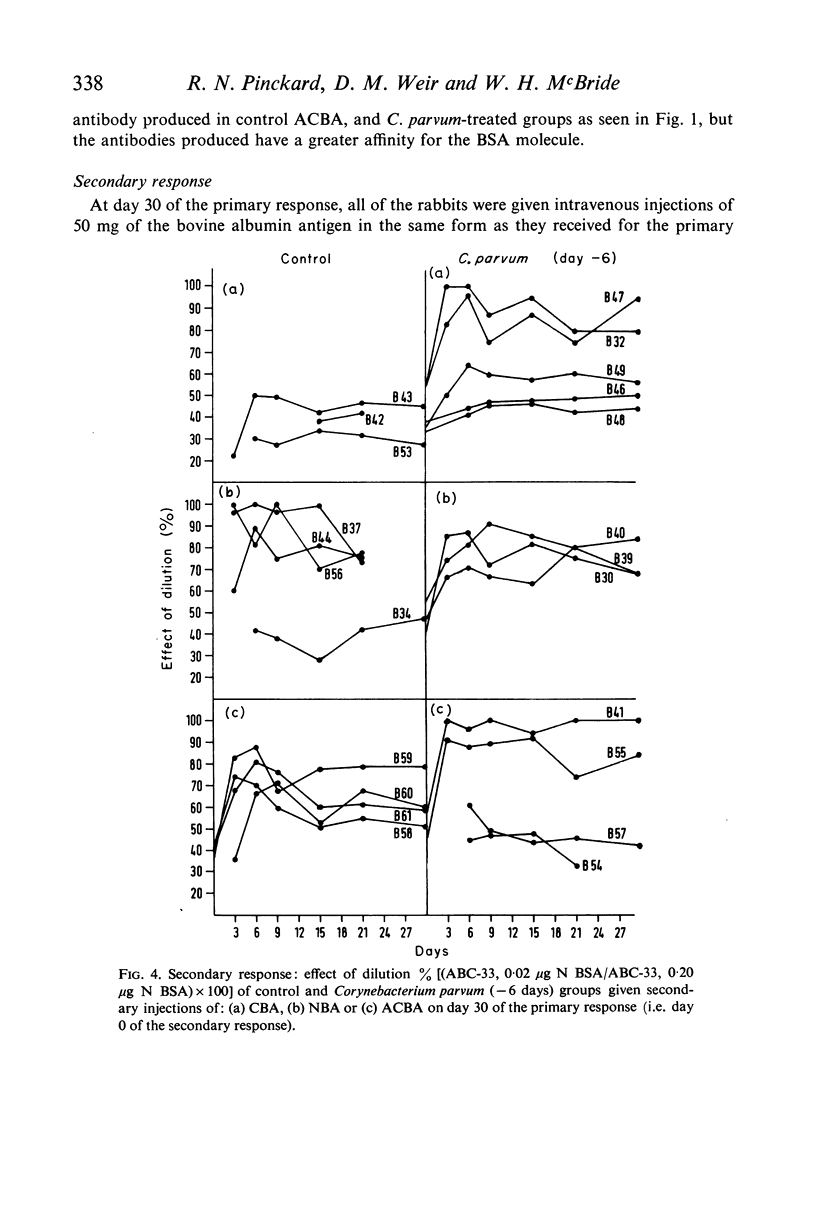
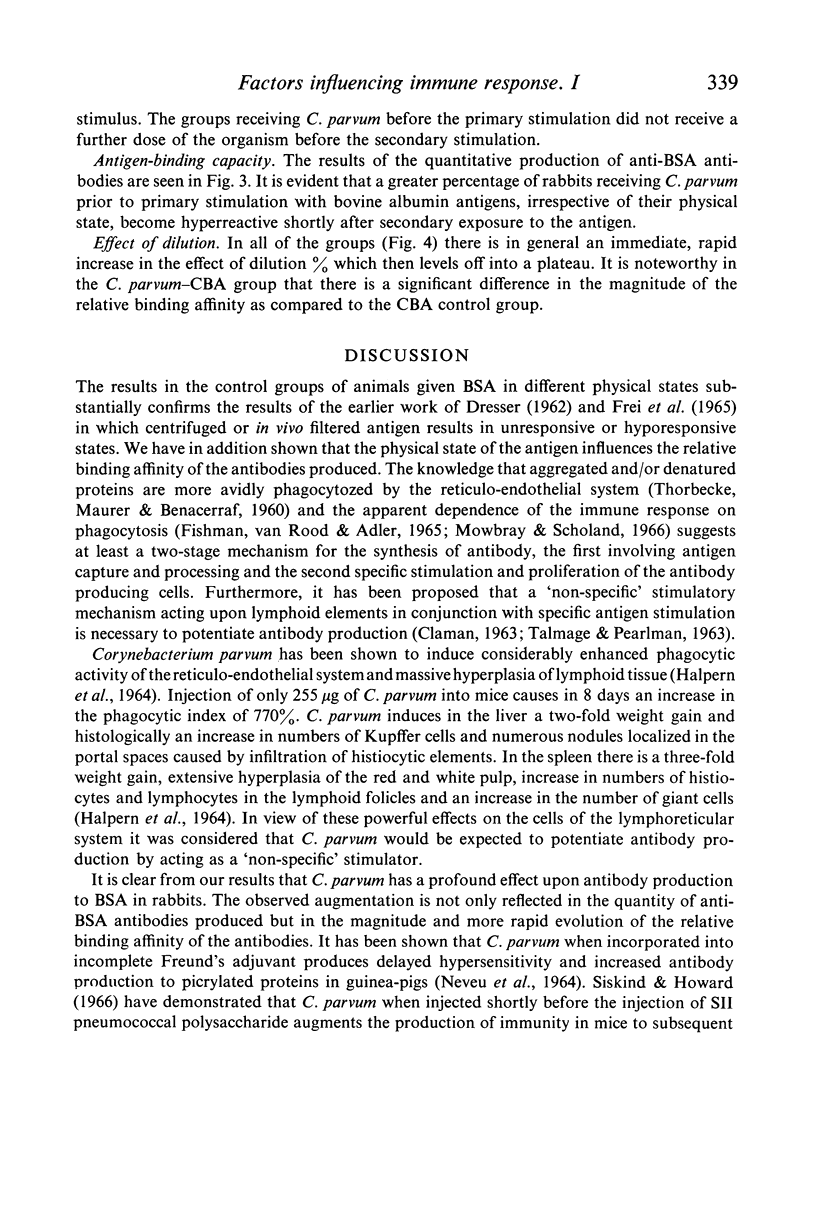
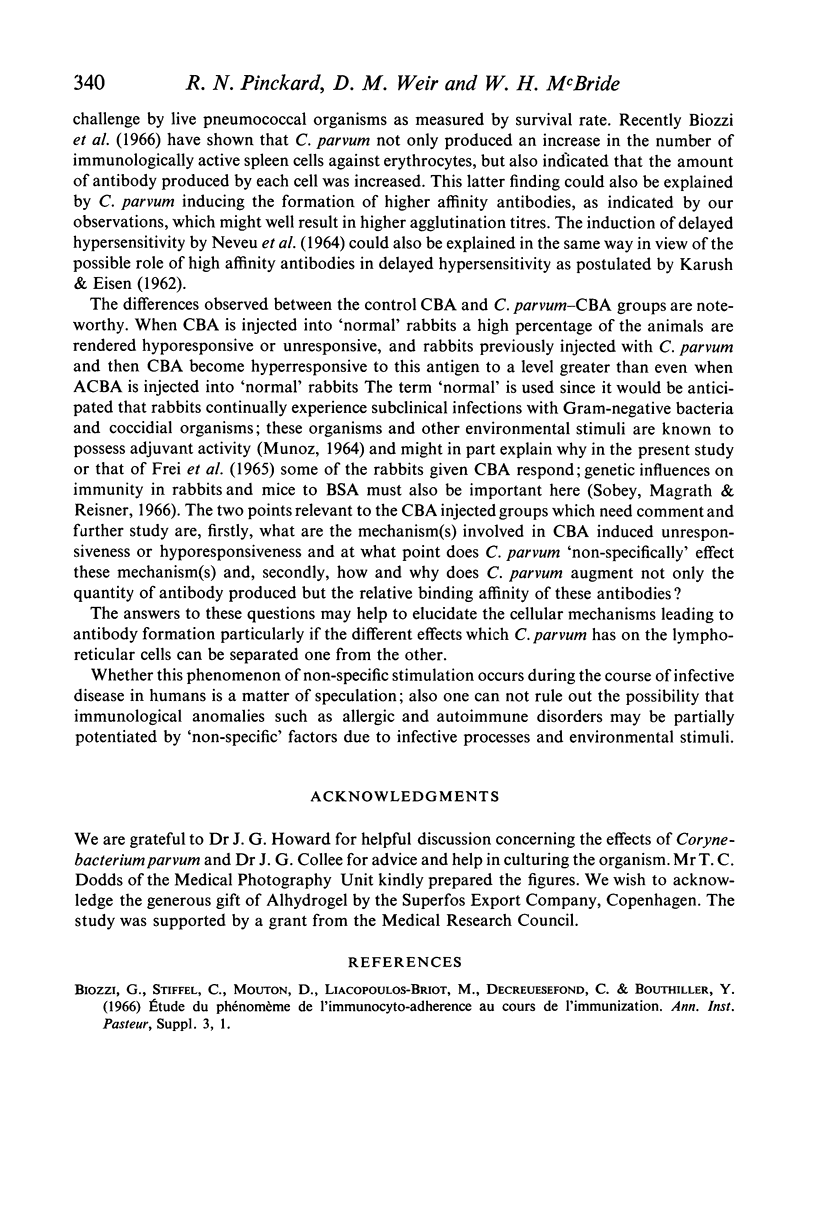
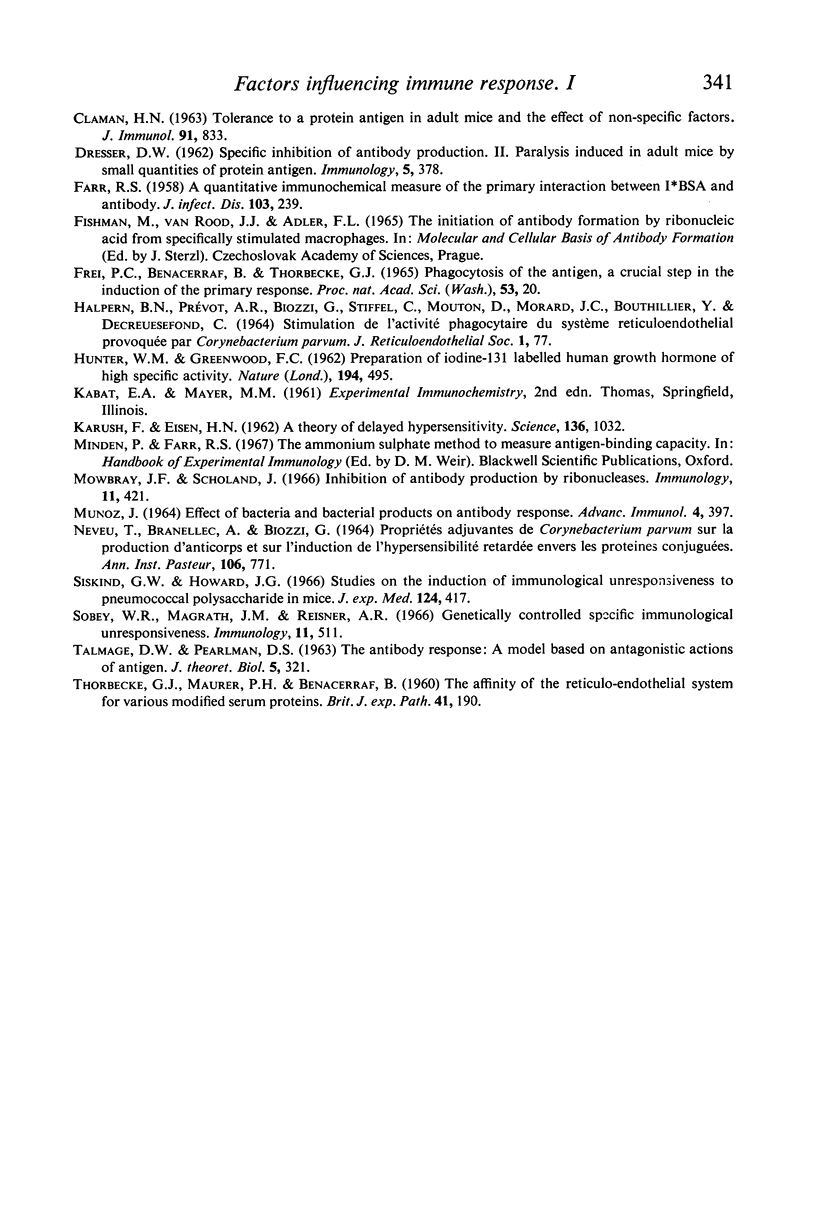
Selected References
These references are in PubMed. This may not be the complete list of references from this article.
- CLAMAN H. N. TOLERANCE TO A PROTEIN ANTIGEN IN ADULT MICE AND THE EFFECT OF NONSPECIFIC FACTORS. J Immunol. 1963 Dec;91:833–839. [PubMed] [Google Scholar]
- DRESSER D. W. Specific inhibition of antibody production. II. Paralysis induced in adult mice by small quantities of protein antigen. Immunology. 1962 May;5:378–388. [PMC free article] [PubMed] [Google Scholar]
- FARR R. S. A quantitative immunochemical measure of the primary interaction between I BSA and antibody. J Infect Dis. 1958 Nov-Dec;103(3):239–262. doi: 10.1093/infdis/103.3.239. [DOI] [PubMed] [Google Scholar]
- FREI P. C., BENACERRAF B., THORBECKE G. J. PHAGOCYTOSIS OF THE ANTIGEN, A CRUCIAL STEP IN THE INDUCTION OF THE PRIMARY RESPONSE. Proc Natl Acad Sci U S A. 1965 Jan;53:20–23. doi: 10.1073/pnas.53.1.20. [DOI] [PMC free article] [PubMed] [Google Scholar]
- HALPERN B. N., PREVOT A. R., BIOZZI G., STIFFEL C., MOUTON D., MORARD J. C., BOUTHILLIER Y., DECREUSEFOND C. STIMULATION DE L'ACTIVIT'E PHAGOCYTAIRE DU SYST'EME R'ETICULOENDOTH'ELIAL PROVOQU'EE PAR CORYNEBACTERIUM PARVUM. J Reticuloendothel Soc. 1964 Jan;1:77–96. [PubMed] [Google Scholar]
- HUNTER W. M., GREENWOOD F. C. Preparation of iodine-131 labelled human growth hormone of high specific activity. Nature. 1962 May 5;194:495–496. doi: 10.1038/194495a0. [DOI] [PubMed] [Google Scholar]
- KARUSH F., EISEN H. N. A theory of delayed hypersensitivity. Science. 1962 Jun 22;136(3521):1032–1039. doi: 10.1126/science.136.3521.1032. [DOI] [PubMed] [Google Scholar]
- Mowbray J. F., Scholand J. Inhibition of antibody production by ribonucleases. Immunology. 1966 Nov;11(5):421–426. [PMC free article] [PubMed] [Google Scholar]
- NEVEU T., BRANELLEC A., BIOZZI G. PROPRI'ET'ES ADJUVANTES DE CORYNEBACTERIUM PARVUM SUR LA PRODUCTION D'ANTICORPS ET SUR L'INDUCTION DE L'HYPERSENSIBILIT'E RETARD'EE ENVERS LES PROT'EINES CONJUGU'EES. Ann Inst Pasteur (Paris) 1964 May;106:771–777. [PubMed] [Google Scholar]
- Siskind G. W., Howard J. G. Studies on the induction of immunological unresponsiveness to pneumococcal polysaccharide in mice. J Exp Med. 1966 Sep 1;124(3):417–429. doi: 10.1084/jem.124.3.417. [DOI] [PMC free article] [PubMed] [Google Scholar]
- Sobey W. R., Magrath J. M., Reisner A. H. Genetically controlled specific immunological unresponsiveness. Immunology. 1966 Nov;11(5):511–513. [PMC free article] [PubMed] [Google Scholar]
- THORBECKE G. J., MAURER P. H., BENACERRAF B. The affinity of the reticulo-endothelial system for various modified serum proteins. Br J Exp Pathol. 1960 Apr;41:190–197. [PMC free article] [PubMed] [Google Scholar]
- Talmage D. W., Pearlman D. S. The antibody response: a model based on antagonistic actions of antigen. J Theor Biol. 1963 Sep;5(2):321–339. doi: 10.1016/0022-5193(63)90067-5. [DOI] [PubMed] [Google Scholar]


